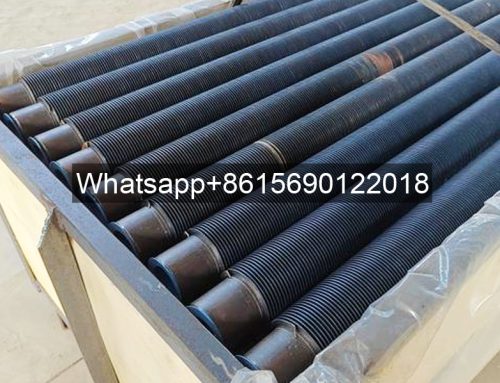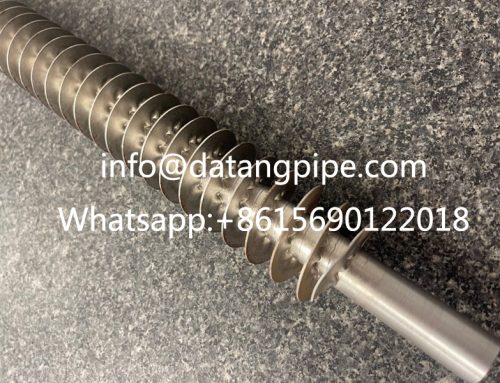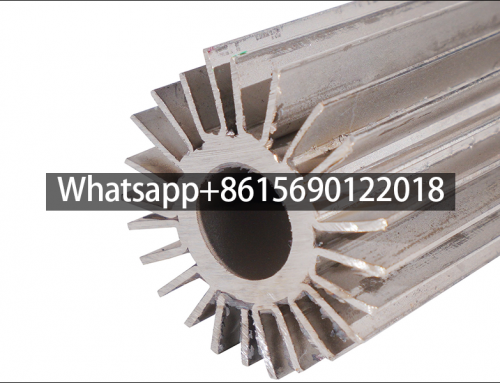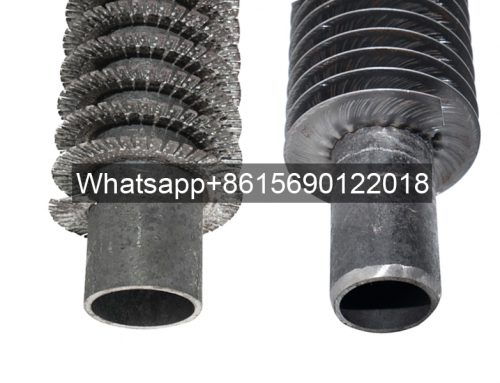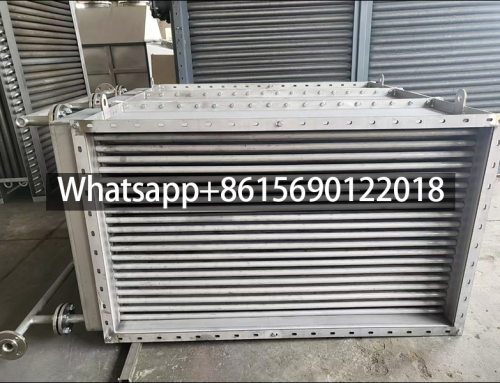The Role of Bimetallic Finned Tubes in Heat Exchangers
Bimetallic Finned Tubes, as the name implies, are heat exchange components in which the base tube and the fins are made of two different materials.Here is the precise of the technical specifications regarding bimetallic finned tubes’ roles in heat exchangers:

???? I. Bimetallic Finned Tubes Core Mechanisms for Enhanced Heat Transfer
-
Material Synergy
- Pressure Resistance: Inner steel tubes (carbon steel/stainless steel/nickel alloys) withstand high-pressure fluids (≤2.5 MPa) in high-temperature/corrosive environments (e.g., H₂S, acidic gases).
- High Thermal Conductivity: Outer aluminum/copper fins (λ=200-220 W/(m·K)) rapidly dissipate heat, improving per-area heat transfer efficiency by 3-10x compared to bare tubes.
- Near-Zero Interfacial Resistance: Mechanical bonding achieves negligible contact thermal resistance (
-
Structural Innovations
- Multi-Channel Optimization: Fins extend into the inter-tube gap to create turbulent flow paths, disrupting boundary layers and boosting convection coefficients by 30-60%.
- Fin Geometry Enhancement: Spiral/corrugated fins (fin ratio up to 22.7) increase surface area while inducing vortex flow to prolong heat exchange paths.
️ II. Bimetallic Finned Tubes Engineering Advantages
| Performance Aspect | Technical Implementation | Application Benefit |
|---|---|---|
| Corrosion Resistance | Steel core pressure integrity + aluminum layer isolation (e.g., against Cl⁻); 316L SS lifetime >10 years in sulfur environments | 3x lifespan extension in chemical/marine equipment, reducing downtime |
| Energy Savings | Aluminum fins minimize thermal loss, improving waste heat recovery efficiency by 30-40% | Petrochemical furnaces reduce steam consumption by 8 tons/day, cutting annual energy costs by 25%7 |
| Space Adaptability | Low-fin height (≤16.5 mm) + staggered arrangement for confined spaces (e.g., ships/vehicles) | 40% smaller heat exchanger footprint with flexible installation |
???? III. Bimetallic Finned Tubes Critical Industrial Applications
-
High-Temperature/Pressure Scenarios
- Petrochemicals: N04400 nickel alloy core + aluminum fins resist H₂S corrosion (>300°C) in hydrotreaters.
- Power Generation: 316L SS tubes in flue gas heat recovery withstand acid dew point corrosion (pH 1.5-3.0).
-
Hygiene & Precision Control
- Food/Pharma: Copper-SS bimetallic tubes inhibit microbial growth, withstand 150°C sterilization, and comply with GMP.
- Temperature Management: Zoned flow control + fin-induced turbulence ensures ±1°C uniformity in process environments.
???? IV. Bimetallic Finned Tubes Breakthrough Technological Value
Bimetallic finned tubes resolve core limitations of conventional heat exchangers via material-structure synergy:
- Extended Lifespan: Composite coatings isolate the core tube, achieving 8-15 years in oil mist/salt spray environments (3x carbon steel lifespan);
- Efficiency Leap: Nanofluids (TiO₂/CuO) + micro-structured fins increase heat transfer coefficients by 35% while reducing Δp by 20%;
- Reduced OPEX: Smooth fin surfaces resist fouling; cleaning requires only 0.5 MPa compressed air, lowering maintenance costs by 40%.
Case Study: A petrochemical plant used Φ50mm N08825 alloy core + Cu-Al composite fins (fin ratio=23) in sulfur recovery units, achieving zero corrosion-induced leakage over 8 years with 28% increase in waste heat power generation.


